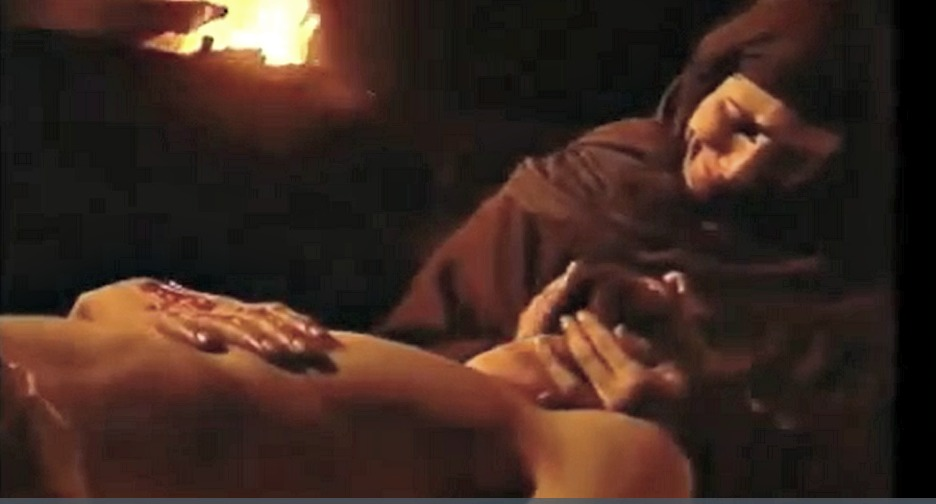With the proper reading of the Marian feast that we celebrate today of the Liturgical Year of Dom Prospero Gueranger, Abbot of Solesmes, we can confirm once again that Mr. Jorge Mario Bergoglio Sivori is an apostate who does not profess the Catholic faith. This anti-Catholic arch-heretic disguised as a Pope is an anti-Christ, enemy of the Law of God and the worst enemy of Jesus Christ, of the Church and of the Blessed Virgin Mary.
The feast of Our Lady of Sorrows originated in Cologne in the 15th century as a response to the Protestant Hussite heretics.
O all ye that pass by the way, attend, and see if there be any sorrow like to my sorrow! Is this, then, the first cry of that sweet babe whose coming brought such pure joy to our earth? Is the standard of suffering to be so soon unfurled over the cradle of such lovely innocence? Yet the heart of mother Church has not deceived her; this feast, coming at such a time, is ever the answer to that question of the expectant human race: What shall this child be?
The Savior to come is not only the reason of Mary’s existence, he is also her exemplar in all things. It is as his Mother that the Blessed Virgin came, and therefore as the Mother of sorrows; for the God, whose future birth was the very cause of her own birth, is to be in this world a Man of sorrows and acquainted with infirmity. To whom shall I compare thee? sings the prophet of lamentations: O Virgin … great as the sea is thy destruction. On the mountain of the Sacrifice, as mother she gave her Son, as Bride she offered herself together with him; by her sufferings both as Bride and as Mother, she was the co-redemptress of the human race. This teaching and these recollections were deeply engraved on our hearts on that other feast of our Lady’s dolors which immediately preceded Holy Week.
Christ dieth now no more: and Our Lady’s sufferings are over. Nevertheless the Passion of Christ is continued in his elect, in his Church, against which hell vents the rage it cannot exercise against himself. To this Passion of Christ’s mystical Body of which she is also a Mother, Mary still contributes her compassion; how often have her venerated images attested the fact, by miraculously shedding tears! This explains the Church’s departure from liturgical custom by celebrating two feasts, in different seasons, under one title.
(...)
Oh, the greatness of our Judith among all creatures! “God,” says the pious and profound Father Faber, “vouchsafed to select the very things about him which are most incommunicable, and in a most mysteriously real way communicate them to her. See how he had already mixed her up with the eternal designs of creation, making her almost a partial cause and partial model of it. Our Lady’s cooperation in the redemption of the world gives us a fresh view of her magnificence. Neither the Immaculate Conception nor the Assumption will give us a higher idea of Mary’s exaltation than the title of co-redemptress. Her dolors were not necessary for the resurrection of the world, but in the counsels of God they were inseparable from it. They belong to the integrity of the divine plan. Are not Mary’s mysteries Jesus’ mysteries, and his mysteries hers? The truth appears to be that all the mysteries of Jesus and Mary were in God’s designs as one mystery. Jesus himself was Mary’s sorrow, seven times repeated, aggravated sevenfold. During the hours of the Passion, the offering of Jesus and the offering of Mary were tied in one. They kept pace together; they were made of the same materials; they were perfumed with kindred fragrance; they were lighted with the same fire; they were offered with kindred dispositions. The two things were one simultaneous oblation, interwoven each moment through the thickly crowded mysteries of that dread time unto the Eternal, out of two sinless Hearts, that were the Hearts of Son and Mother, for the sins of a guilty world which fell on them contrary to their merits, but according to their own free will.”
Prayer to Our Lady of Sorrow for the Conversion of Sinners
Oh! afflicted Mother, dearest Mother, what made thee stand beneath the Cross? It was love for Jesus--it was also love for sinners. Like Jesus thou didst willingly offer thyself, amid the sorrows of Calvary, for poor sinners. Oh! then by the Blood of Jesus--by thy own tears--by His sufferings and thy sorrows, look down upon sinners and bring them to thy dying Son that He may triumph in their repentance and perseverance. Especially do thou lead to Jesus and to pardon our friends and relations.
Oh! remember, dear Mother, that word of Jesus, "I thirst." For what did He thirst but for the salvation of souls? Remember how He prayed for His executioners and how He absolved the dying thief. Remember too, sweet Mother, that it was amid the agonies of thy dying Son, and amid thy own unutterable grief, that Jesus spoke those wonderous words, "Mother, behold thy son." "Son, behold thy Mother." Oh! we then are thy children--thou art our Mother. Sinners are thy children--thou art their Mother. To thy loving heart we commend the poor sinner. Pray for us, most loving, most dear, and most sorrowful Virgin Mary. Amen



_-_Pieta_(1876)_modif_2.jpg)

No comments:
Post a Comment
Note: Only a member of this blog may post a comment.